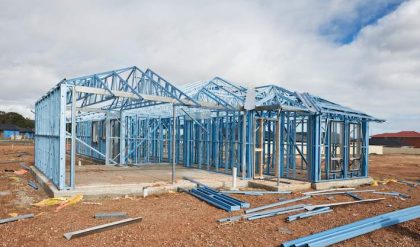Information to provide in scheme design:
● Thickness of slab
● Thickness of load bearing walls that support slab
● Distance between load bearing walls
● Clear floor height
Reasons to use this slab type:
Capabilities
● Uses partition walls as structural elements not columns, which makes structure more economical due to less materials used
● Higher headroom are then produced from this wall type since space for beams are not needed
● Good lateral action in both directions provided by core walls
● Flat soffit of slabs reduces concrete spalling so not a lot of need for maintenance
● No concern for the reduction of beam strengths since beams are not needed
● Not a lot of maintenance cost needed
● Suitable for irregular grids and structural shapes
● Provides limits to deflection
● Provides robustness
● Accommodates slab openings for service routing
Construction
● Uses standardized formworks, the simplest method of reinforcement placement, and shuttering
● Repetition of component construction
Advantages over other slabs:
Wall Slab vs Ribbed Slab or Waffle Slab
● Wall slabs use standardized formworks, the simplest method of reinforcement placement, and shuttering to reduce construction time and effort
● More contractor experience in building wall slabs so not a lot of technical issues will occur
Wall Slab vs Flat Slab
● More contractor experience in building wall slabs
● Wall slabs accommodate more slab openings for installation of services and for floor to floor openings
● Wall slabs offer minimum thicknesses that are suitable for large ceiling voids for service installation and routing
● Wall slabs provide more lateral wind resistance due to its rigid walls
● Walls provide better sound and vibration insulation than columns
● Flat slabs need heavy reinforcement, which can increase material cost and congest reinforcement placement.
Wall Slab vs Beam Slab
● Wall slabs provide higher headroom since space for beams are not needed.
● Wall slabs provide more lateral wind resistance due to its rigid walls
● It is more economical to use partition walls as structural elements.
● Wall slabs use standardized formworks to reduce construction time and to increase simplicity of construction processes
● In Beam Slabs, beam strengths will reduce due to penetrations through downstand beams for service installations and there will be clashes in reinforcement placements
● Because of the beams in the Beam Slab structure, construction will be more complicated and time consuming because more reinforcement arrangement design and labor force would be needed.
Disadvantages
● Construction is only inexpensive for regular spaced walls
● Wall slabs are not flexible for large span concentrated loads
● Structural walls are not as accommodating for service installations
● Walls need to be a certain thickness for efficient reinforcement placement
● The fixed layout for structural walls do not give a lot of flexibility for architectural design and planning purposes


Comments are closed.